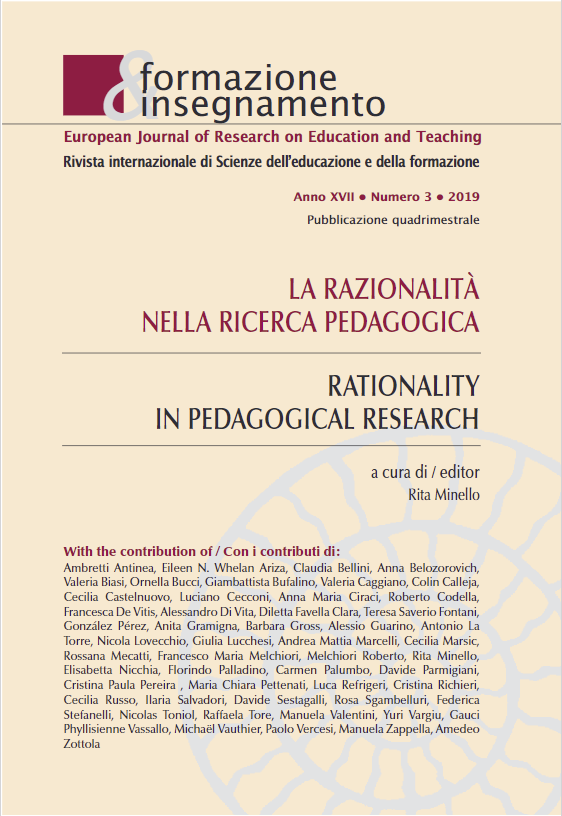Evaluating and giving value to gifted students at school: towards the design of an integrated evaluation model for their inclusion
DOI:
https://doi.org/10.7346/-fei-XVII-03-19_08Abstract
Talent as described by Francois Gagnè represents a dynamic process through which natural abilities turned into real attitudes that require systematic learning and training. Potential intelligence Test (TIP) is a dynamic evaluation tool that measures intelligence through dynamic assessment indicators that distinguish between the apparent level of development and the level of potential development of the person. At the base of the dynamic assessment of the TIP we find the socio-cultural theory of Vygotskij concerning the concept of proximal development zone which represents the distance between the level of performance that a student can reach without help and the level to which it can instead arrive when it is led by a more experienced person in that specific sector. Furthermore, the TIP represents an important didactic-inclusive tool because it allows the screening of the whole class even before the student shows typical forms of socio-cultural disadvantage and can be prop up by the design of an integrated model that also considers the administration of others evaluation tests such as: the Gifted Rating Scale-School Form, the Bender Visual Motor Gestalt Test, the Development Test of Visual-Motor Integration, the Questionnaire on Learning Processes, the Test of Memory and Learning, the Scale of Motor Development and the Battery for Motor Evaluation of the child.
Downloads
Published
How to Cite
Issue
Section
License
Copyright (c) 2019 Pensa MultiMedia

This work is licensed under a Creative Commons Attribution 4.0 International License.
Formazione & insegnamento is distributed under Attribution 4.0 International (CC BY 4.0).
For further details, please refer to our Repository & Archiving Policy, as well as our Copyright & Licensing Terms.





